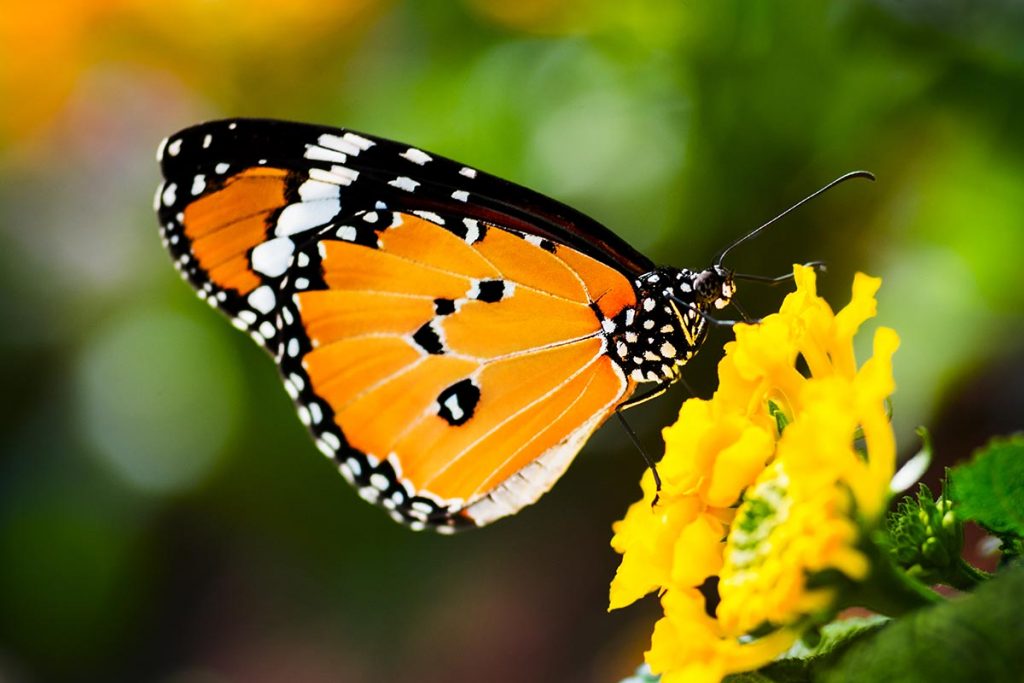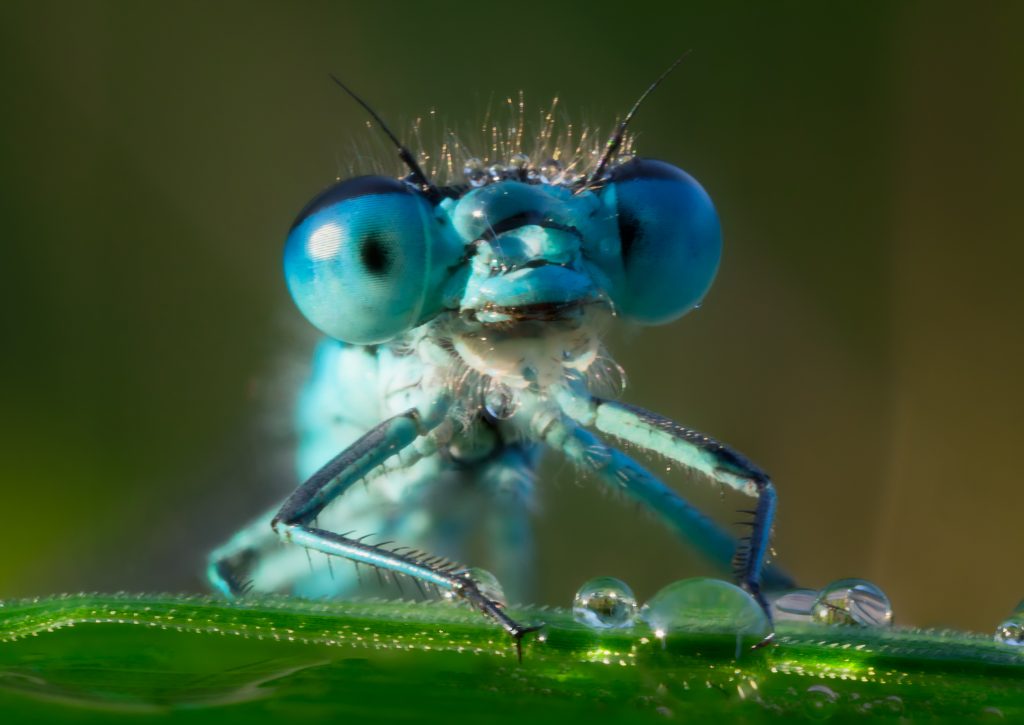Reading Time: 7 minutes read
There’s a whole other world to be found at the level of insects, flowers, toys, gears, and ink drying on paper. It’s a place full of beauty, secrets, and intricate patterns, yet one we typically swat at, walk over, or keep locked away in the junk drawer. Macro photography can force us to stop and recontextualize our place in that world.
This up-close style results in truly incredible images, but it’s also incredibly difficult to get right. If you want to explore your world in miniature, here are some photography tips to get you started.
Buy a quality macro lens
Camera lenses don’t focus well at close distances. With a standard lens, even an expert photographer would have a hard time making a darling snail look like more than a fuzz ball.
Most modern DSLR cameras come with a built-in “macro mode.” This mod will get you started, but you’ll eventually require a quality macro lens. If you want true macro shots, look for a lens that can magnify your subject at a reproduction ratio of 1:1 or higher.
Because iPhone lenses are small, you may think you can get close enough to any subject. While it’s true you can get close, you can only get so close. Luckily, macro lenses are available for iPhones, as well. Just know these lenses can’t be used in tandem with your phone case, so handle with care.
What macro lens should you buy? Do your homework to see what’s available for your camera or phone, and read reviews by seasoned photographers. Remember: You generally get what you pay for.
Find those unique subjects
We all know what a sunflower looks like, but a close-up shot of its disk florets reveals tiny seedlings spiraling into infinity. It’s a breathtaking display of the Fibonacci sequence, and something we miss at a glance.
That’s the joy of macro photography; it showcases the everyday in extraordinary ways.

When considering subjects, look for beauty in those unexpected places. Consider nature as seen by a tree-bound lichen, the crystalline patterns of snow clinging to a red toy truck, or the alien symmetry of a dragonfly’s compound eye.
But always remember your ethical duty as a macro photographer. When photographing live subjects, don’t handle them or move them to new locations. Think of yourself as an artistic zoologist: your job is to document, not to interfere.
Create (or wait) for the best light
Light is the most important element of any photograph. The more micro you get, the truer that statement becomes.
The best photographic light is soft and spread evenly over your subject. Unfortunately, your camera’s standard flash isn’t up to the task. Its harsh burst will wash out your image to ruinous effect.
Consider purchasing a ring flash instead. A ring flash will illuminate the subject evenly in attractive light. It works well for portraits too!
If you can’t afford a ring flash at the moment, wait for nature to provide the light you need. A nice covering of clouds on a bright day will diffuse sunlight evenly across the world. This heavenly light complements most any subject, macro ones included.
Find your focus
Placing a small subject close to the lens confuses your camera. It won’t be able to figure out what you want to focus on, so the image will swim all over the place, never settling on any one thing.
If you have the option, don’t fight with the autofocus. It’s a struggle seldom won. Switch to manual focus instead. Then up the aperture to a higher F number and increase the shutter speed, especially if your diminutive subject likes to be on the move.
These settings won’t guarantee an in-focus shot every time, and you’ll have to make further adjustments depending on a host of variables. But they will help you increase your chances of capturing that one-of-a-kind shot before it flutters away.
Position and composition

Architectural photography springs to life with the perfect angle, but finding that angle can be daunting. You have to traipse through and around a building, the sun is always moving, etc.
Not so with macro. Small subjects give you the freedom to explore many angles with little down time. If your arms can reach, you can snap the shot.
Go high to see the intricacies of a fountain pen’s tip. Go from the side to get the light glinting off an iris. Go low to make your son’s action hero appear as large as it is in his imagination. Just enjoy the freedom to experiment.
Don’t ignore the background
Macro photography requires a narrow depth of field, so a subject in focus results in a background that is blurry and indistinct. That doesn’t mean you can ignore it, though. In fact, the background can often make or break your composition.
Angle your shot so background elements don’t distract the viewer’s eye. Positioning the background farther away can help as it ensures everything will maintain that lovely blur. If possible, try to locate a setting that contrasts with the subject — for example, a red ladybug against a sea of green.
Obviously, backgrounds are less of a concern with inanimate objects that you can relocate. But when photographing that stubborn spider, remember to use angles to expand the available background options.
Take the shot
If you’re shooting trees, insects, or flowers—basically anything in nature—you never know what will happen. A stiff breeze could blow that autumn leaf to the ground. The bumble bee may get irritated at your presence and buzz off.
If you don’t want macro photography to become an exercise in regret and missed opportunities, take the shot! Any image is better than no image.
Burst mode can be your best friend here. The more pictures you take, the better your chances of snagging a good one. Yes, organizing those photos can be time consuming, but when you see that unparalleled shot, it will all be worth it.
Edit to enhance
Another reason to take the shot is that editing can make a good image great. You can adjust the color grading to make your subject more dynamic. You can blur the background elements to be less distracting. You can crop out unwanted elements all together. There’s so much you can do!
Any discussion on photo editing will take up several articles—for example, this one and this one—but this should give you an idea of what is capable and reinforce the importance of taking the shot.
Be patient

Macro photography is challenging. Tiny subjects won’t pose like friends, the camera can feel like it’s actively trying to sabotage you, and sometimes finding the right subject matter can be like locating a needle in a haystack (though that would make for an interesting up-close composition).
In short, be patient!
Take your time. Enjoy exploring the world’s pocket-sized dimensions. Learn to appreciate the challenge and embrace failures as learning experiences. Perhaps more than any other type of photography, macro photography requires you to love the process as much as the photo.
A new way to look at the same world
Need help selecting the best of your macro photos? If so, our last photography tip is to give Motif a try.
Motif’s premier Autoflow system analyzes and curates your photos based on the same criteria used by professional photographers. It looks for clarity, color, image orientation, and yes, focus. Then the system selects the best images and arranges them in professional layouts to create a special and individualized photo book.
Autoflow can help you find your best shots in an instant, and you can edit them within the app. Thanks to Motif’s new iOS app, you can do so from anywhere!
With Motif, you can create a photo book that pairs your macro photography alongside treasured memories of family and friends, so you can cherish all the facets of your world for years to come.






